
I am sometimes asked why I collect New Zealand stamps. A major reason is the four classic definitive issues: the Chalon Heads, the first pictorials, the GV recess printed and the second pictorials.
London prints, 1898
In 1895, the New Zealand Post Office opened a competition for a new issue stating that the designs should show "New Zealand scenery or genre". The aim was to publicise New Zealand and, to ensure that they would be of high quality, they were to be recess printed rather than produced by the cheaper method of surface printing used in the first and second side-faces.
They were issued in 1898 when to issue pictorial definitive stamps without the monarch's head was unusual.
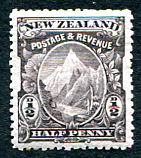
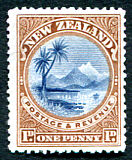
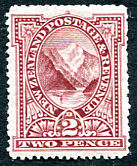
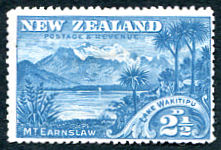
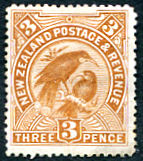
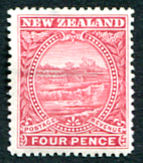
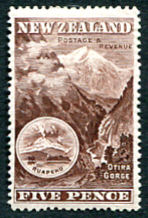
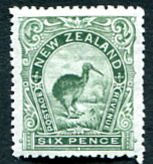
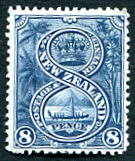
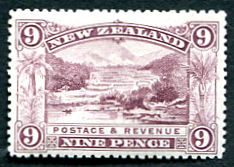
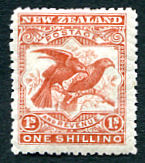
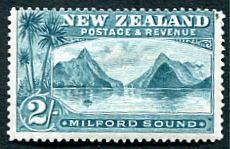
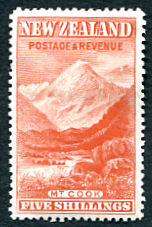
The London prints
The plates were engraved by Waterlow and the first printings were by them in London. The stamps were printed on paper with no watermark and issued in New Zealand on 5 April, 1898. Various perforating machines were used and the stamps are usually described as being Perf 12 to 16, a very strange state of affairs.
Wakitipu - Wakatipu error
The 2½d value depicts a lake that was incorrectly spelled Wakitipu instead of Wakatipu. A new plate with the correct spelling was engraved and the stamps issued on 5 May 1898. However, further stamps were printed from the original plate and, due to speculative buying, the error is more common than the correct spelling.


Wrong and corrected spelling of Wakatipu
Plate problems and resulting changes
There were several practical problems with the London plates. The New Zealand Post Office had expected the issue to be in two sizes and to be in sheets of either 240 or 120. The smaller stamps were of a non-standard size and were larger than had been expected and so none were in sheets of 240. Most, including the commonly used ½d and the 2d values, were in plates with only 120 impressions while the 1d was in sheets of 80 and the 5s in sheets of 60. Moreover, the 1d was issued in two colours while the previous 1d stamp was in a single colour with 240 impressions on each plate and therefore could be produced much more cheaply and quickly.
To deal with demand, the ½d, 1d and 2d values from the second side-face definitives remained in use along with the new set. As that could not continue indefinitely, it was decided that the design for the 1d and 4d values would be interchanged and that the ½d, 1d and 2d values would be reduced in size and printed from plates with 240 impressions.
It had always been planned that the printing of the stamps would be by the Government Printing Office in Wellington and that took place from 1899.
The above information is taken from:
The Postage Stamps of New Zealand Vol 1, published by the
Royal Philatelic Society of New Zealand in 1938.
The 1898 Pictorial Issue of New Zealand, D. Diamond, published by the
New Zealand Society of Great Britain in 2014.
All scans were made by the author.